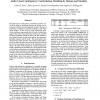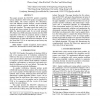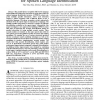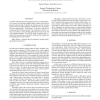249 search results - page 30 / 50 » Continuous speech recognition with a TF-IDF acoustic model |
INTERSPEECH
2010
13 years 2 months ago
2010
The phenomenon of anticipatory coarticulation provides a basis for the observed asynchrony between the acoustic and visual onsets of phones in certain linguistic contexts. This ty...
ICASSP
2011
IEEE
12 years 11 months ago
2011
IEEE
This paper presents the HKCUPU speaker recognition system submitted to NIST 2010 speaker recognition evaluation (SRE). The system comprises five subsystems, each with different ac...
TASLP
2008
13 years 7 months ago
2008
The parallel phone recognition followed by language model (PPRLM) architecture represents one of the state-of-the-art spoken language identification systems. A PPRLM system compris...
ICASSP
2009
IEEE
14 years 2 months ago
2009
IEEE
When exposed to environmental noise, speakers adjust their speech production to maintain intelligible communication. This phenomenon, called Lombard effect (LE), is known to consi...
ICASSP
2009
IEEE
14 years 2 months ago
2009
IEEE
In modern automatic speech recognition systems, it is standard practice to cluster several logical hidden Markov model states into one physical, clustered state. Typically, the cl...




